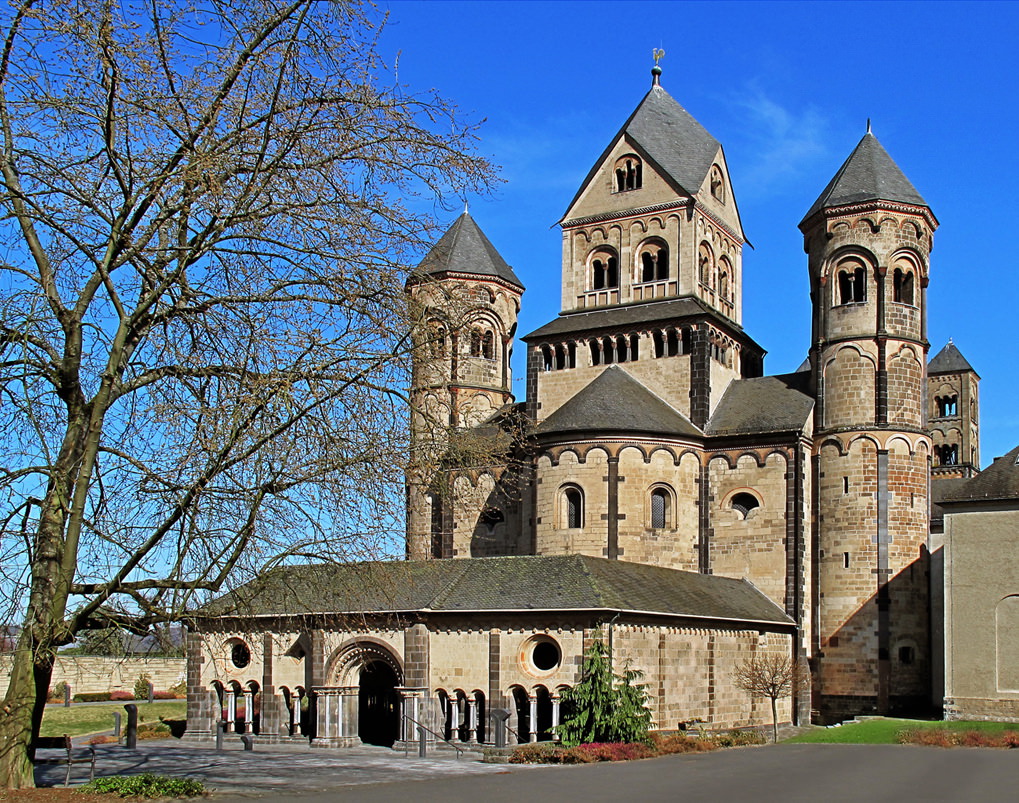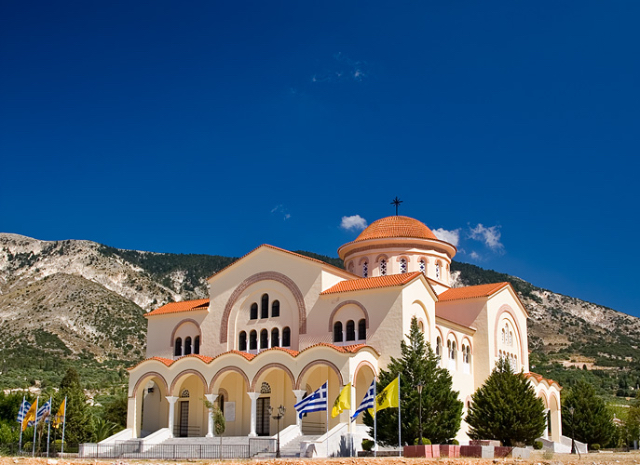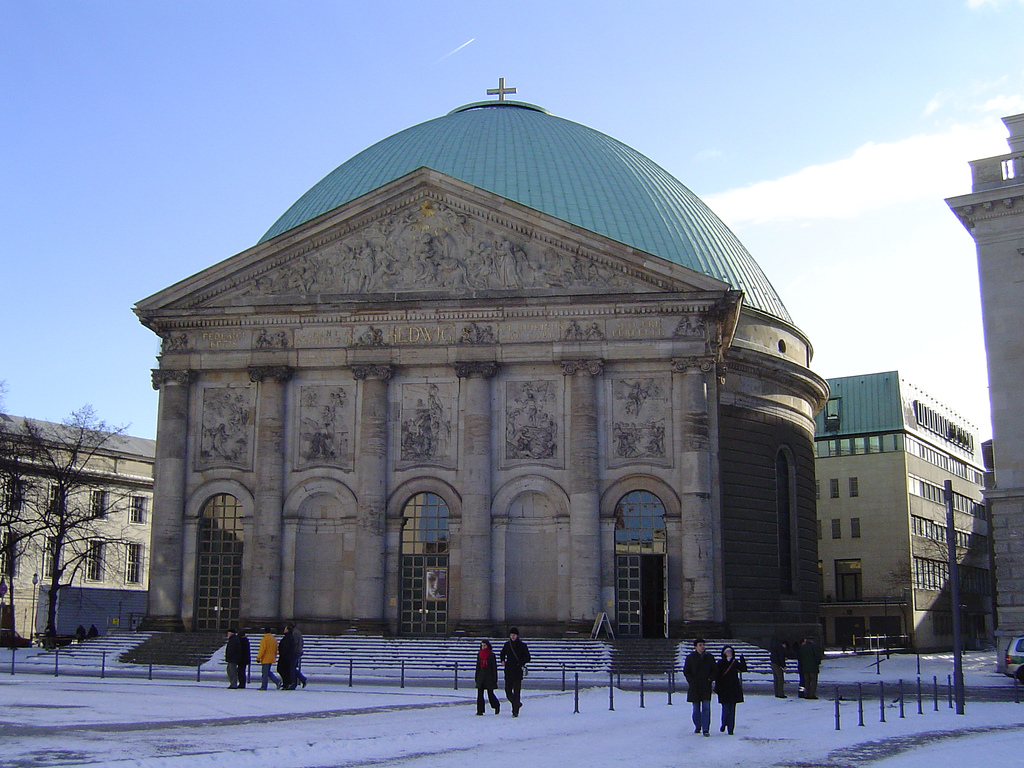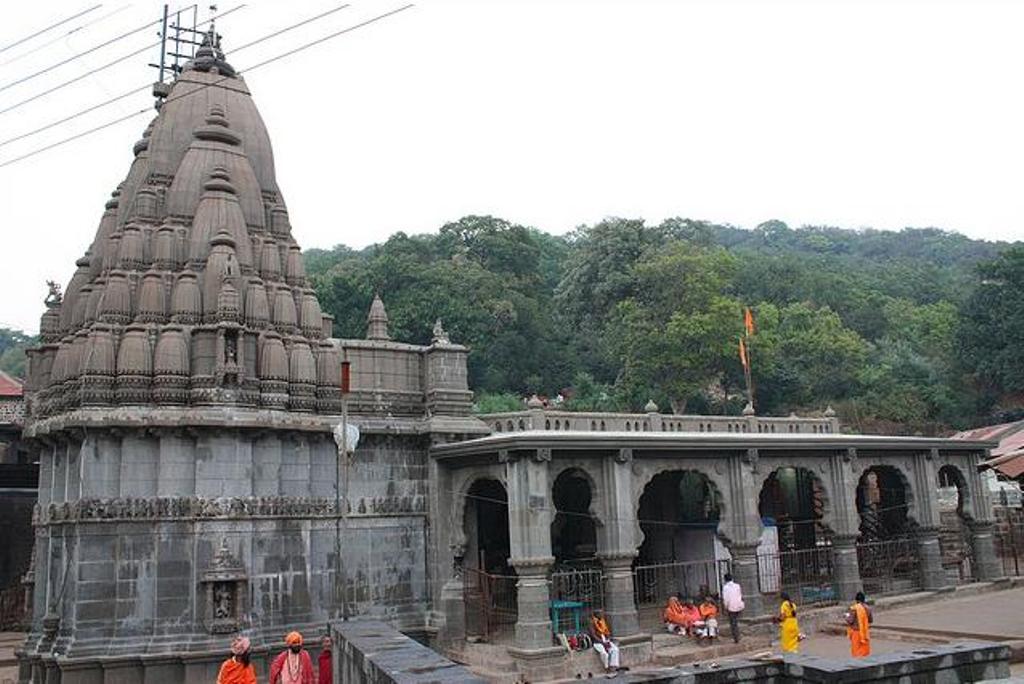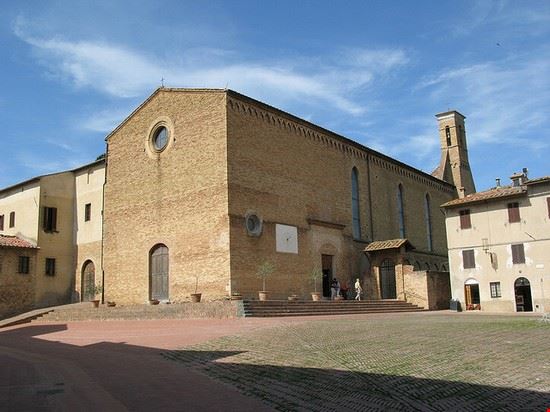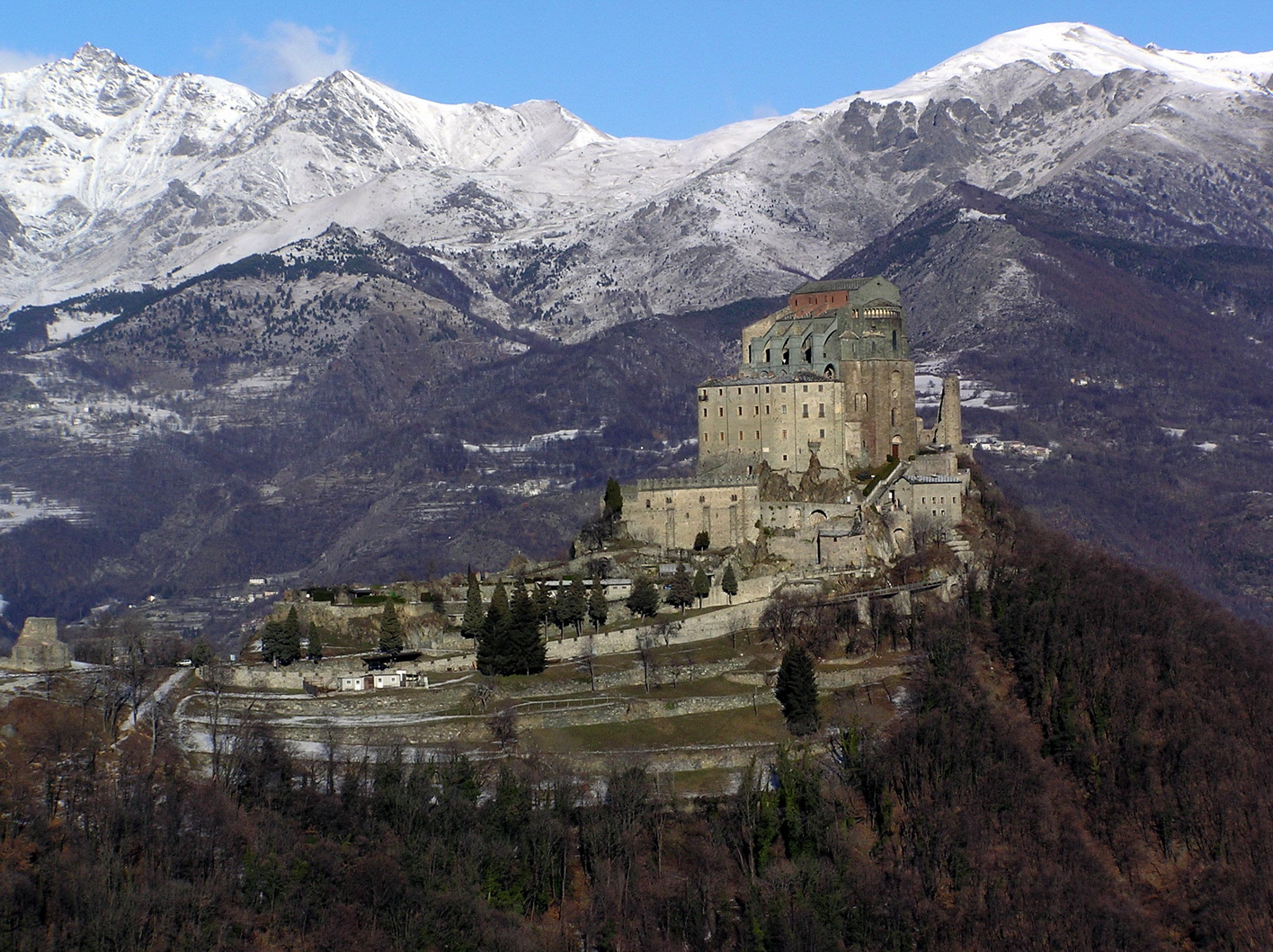Maria Laach Abbey was founded in 1093 as a priory of Affligem Abbey (in modern Belgium) by the first Count Palatine of the Rhine Heinrich II von Laach and his wife Adelheid von Orlamünde-Weimar, widow of Hermann II of Lotharingia. Laach became an independent house in 1127, under its first abbot, Gilbert. The abbey developed as a centre of study during the 12th century. The 13th-century abbots Albert (1199–1217) and Theoderich II (1256–1295) added significantly to the buildings and architectural decoration, including the monumental tomb of the founder.
In common with most other German Benedictine houses, Laach declined during the 14th century in terms of its spiritual and monastic life, a tendency which was reversed only in the late 15th century, under the influence of the reforming Bursfelde Congregation, which the abbey joined, supported against a certain resistance within the abbey by Abbot Johannes V von Deidesheim (1469–1491).
The consequent improvement in discipline led to a fruitful literary period in the abbey”s history, prominent in which were Jakob Siberti, Tilman of Bonn and Benedict of Munstereifel, but principally Prior Johannes Butzbach (d. 1526). Although much of his work, both published and unpublished, survives, his chronicle of the abbey is unfortunately lost.
Laach Abbey was dissolved in the secularisation of 1802. The premises became the property, first of the occupying French, and then in 1815 of the Prussian State. In 1820 the buildings were acquired by the Society of Jesus, who established a place of study and scholarship here.
The abbey structure dates from between 1093 and 1177, with a paradisium added around 1225 and is considered a prime example of Romanesque architecture of the Staufen period. Despite its long construction time the well-preserved basilica with its six towers is considered to be one of the most beautiful Romanesque buildings in Germany.
Due to a considerable reduction of the lake level in the early 19th century, serious and unexpected structural damages to the church vaults and roofs were detected. Three important renovation campaigns took place – the first in the 1830s to repair the structural damages including the removal of the paradisium”s upper storey (it had an upper storey at that time for accommodation facilities), the second in the 1880s including repairs after a serious fire in the southern round tower in 1885, and the third in the 1930s. Many former changes to the buildings carried out in Gothic (e. g. steep tower roofs) and Baroque style (e. g. wider windows) have been re-altered to Romanesque style.
The Maria Laach Abbey has been at the center of a controversy over its relations with the Nazi regime between 1933 and 1945. In particular Heinrich Böll, depicting in Billiards at Half-past Nine a Benedictine monastery whose monks actively and voluntarily collaborated with the Nazis, is generally considered to have had Maria Laach in mind.
Born Henri Ebel in 1896 as son of a wine-producing family from Alsace, and later a significant scholar of his times, Dr. Basilius Ebel became abbot of St. Matthias” Abbey in Trier in 1939 and provided a sanctuary to Jews whom he admitted among the monks. In 1941, his abbey was confiscated by the Gestapo and he himself was exiled to Maria Laach where he became abbot from 1946 to 1966. Under his leadership, Maria Laach became an important centre of reconciliation between Christians and Jews.
The abbey church of Maria Laach is considered a masterpiece of German Romanesque architecture, with its multiple towers, large westwork with arcaded gallery, and unique west porch. The east end has a round apse flanked by twin square towers. Over the transept crossing is a broad cupola with cone-shaped roof. The monumental west façade includes a west choir with apse flanked by round twin towers and a square central tower.
The Paradise, a single-story, colonnaded west porch surrounding a small courtyard, was added in about 1225. It recalls the architecture of Early Christian basilicas. Its capitals are richly carved with human and mythical figures. The imaginative mason is known as the Laacher Samson-Meister or ‘Master of the Laach Samson,’ whose carvings are also found in Cologne and elsewhere. The Lion Fountain in the courtyard was added in 1928.
Notable features of the interior include the tomb of the founder Pfalzgraf Heinrich II (dating from 1270), 16th-century murals, a Late Romanesque baldachino in the apse, and interesting modern decorations such as mosaics from c.1910 and stained glass windows from the 1950s.
References:
Wikipedia
